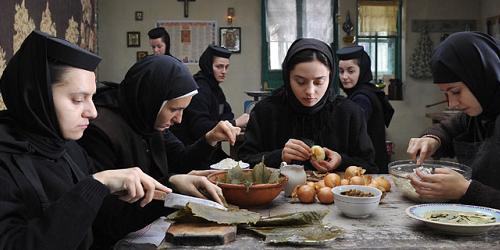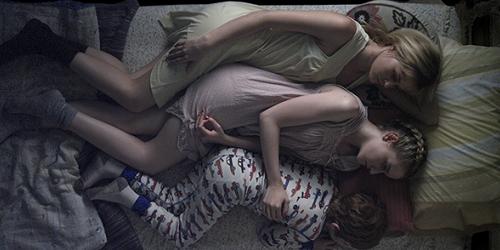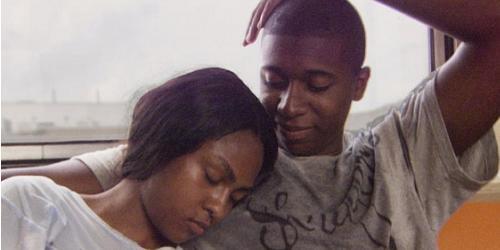
Well, well – we’re back here again, are we? The biggest difference between that post and the one you’re about to read, though, is that 2013 has been nothing but gravy through and through, boasting an absolutely absurd number of high quality films of all makes and models; if the early going was slow, things picked up in a big way in late Spring, and that momentum stuck for pretty much the rest of the year following that. Whether you were hitting the big multiplexes or your local arthouse establishment, 2013 had a slew of wonderful movies worth your patronage.
Inevitably that means some of them fell through the cracks; it’s nearly impossible for one person to see every single movie that appears on a given annual release slate, though there are many who try and a few who manage to come pretty close. (They’re called “professional film critics”.) But the issue of seeing becomes complicated when there’s so much content in the aether that’s worth seeing, and that means a massive influx of titles that get left in the dust, overlooked and forgotten, as the days grind on.
I’ll be upfront: I barely saw a fraction of what 2013 had to offer. There are a huge number of movies I’ve missed, some of which I will inevitably catch up on so I can have an opinion on them, some of which I hope to catch up on because I just want to see them, and many of which I’ll probably put on my list of films to see “someday”, which is basically a compilation of flicks I know I should see but probably will never get around to watching. Such is life. Yet through all of this, I mean to convey one important point – that I still saw enough movies this year that I feel qualified to peg a handful of them as overlooked.
I don’t think that requires very much qualification, mind, because invariably the big name releases – the blockbuster titles and the most heralded indie fare – trump the smaller pictures that generally define the creative output of a single release year. This isn’t anything new; it’s just part of the nature of the business. But that just means that it’s even more vital for all of us to comb our “movies seen” lists and highlight the movies that we feel didn’t get a fair shake or enough attention in one 365 span of time.
And so here we are. Again. Note as we go forward that none of these films have much of anything in common other than their lack of visibility; maybe in a less overstuffed slate, one with a decidedly reduced embarrassment of cinematic riches, some of these would enjoy more presence in the annual top ten jamboree that defines the climax of the calendar year. We’ll never know, so perhaps that hardly matters, but either way, here are five movies that I think deserved way more of the spotlight than they got in 2013:
5) Stoker (pictured above):
If you know me, you know Park Chan-wook is one of my favorite contemporary filmmakers. And if you’ve talked to me about Stoker, you may be operating under the impression that I kinda hate it. Well, let me clear that up right now: I don’t. I hate the direction it ultimately takes, and I hate how Park’s deep-rooted need to explain the unholy hell out of his antagonist’s motivations turn this uncomfortably sexy, unapologetically sleazy enigma of a film into a head-scratching exercise in the dangers of excessive exposition; everything leading up to that is just peachy, if “peachy” is an appropriate qualifier for a story that’s this exploitative and this kinky.
Park’s love for Alfred Hitchcock is well-documented by now, and with Stoker, he elevates his profound admiration for the man to new levels of synthetic referentialism; he (working, admittedly, off of a script written by Wentworth Miller) borrows liberally from Shadow of a Doubt for plotting, and he gives his leading lady, Mia Wasikowska, her very own shower scene to boot. It’s what he does with these elements and others that makes the film its own separate entity. If Stoker trips and crashes down a flight of stairs in its final act, it at least makes the journey up to that point a feast of stylized wonder and a literal guilty pleasure.

4) Beyond the Hills:
Forget about Blue is the Warmest Color (well, okay, don’t, because it is a really good movie); Romania’s Cristian Mungiu cornered the market on European arthouse lesbian drama way before Abdellatif Kechiche’s film became 2013’s foreign cinema sensation. A straight-up comparison between the two doesn’t totally work, of course – Kechiche dips his toes into the “coming of age” waters, raising questions about why we love who we love at the same time, while Mungiu instead examines religion’s role and relevance in a modern society that’s outgrowing its draconian mandates.
Sexuality is a big factor here, too, just as it is in Blue, but Mungiu has no male gaze for us. Instead, he has possibly the most stealth horror film of the decade, a picture that either builds toward real-deal demonic possession or a grim example of faith-driven human folly; the decision is mostly up to the viewer, though you might want to dig up the real story that supplies the basis of Mungiu’s film for posterity. But Beyond the Hills remains deeply disturbing no matter how you choose to interpret the events that make up its plot, all the way up to its tragic climax.

3) What Maisie Knew:
“Best Adaptation Of An Obscure Text Featuring Steve Coogan In A Supporting Role” goes to this lyrical little surprise, a modern take on the Henry James novel of the same name by two directors whose filmography to date can be described only as underwhelming. Scott McGehee and David Siegel may not even strike the faintest notes of familiarity with you, unless you’re like me and you wound up being caught in the path of the aggressively mediocre Bee Season back in 2005; to see them come this far after making that middle-road picture is nothing short of impressive.
The real winner here, though, is pint-sized newcomer Onata Aprile, here portraying the object over which Coogan and co-star Julianne Moore play a game of spousal tug-of-war. She’s held up a bit by her elders, but she’s an absolute revelation here, turning out such a delicate, textured performance as to make What Maisie Knew worth watching on her own merits.

There’s an argument worth having over which horror film stands out as 2013’s best – You’re Next and V/H/S/2 are strong contenders – but Jim Mickle’s quiet, brooding, beautifully photographed We Are What We Are is undoubtedly its most overlooked. Maybe its most impressive accomplishment is that it’s a remake, a four-letter word for any genre but an even greater curse when discussing horror; taking Jorge Michel Grau’s 2010 film, relocating it to upstate New York, and injecting it with his own vision makes Mickle’s take on the topic of ritualistic, familial cannibalism feel unexpectedly original.
That We Are What We Are also happens to be stunningly gorgeous helps give it its own identity, too, but Mickle deftly molds the story here into something that’s distinctly American. It’s also incredibly, refreshingly personal in ways that few horror films dare to be. Maybe you have a personal favorite horror pick for the year, but We Are What We Are demands the interest of genre fans.

1) Gimme the Loot:
Lots of coming of age stories hit theaters this year – The Kings of Summer and The Spectacular Now come immediately to mind (even Stoker arguably fits that bill) – but among 2013’s crop of films in that particular cinematic niche, Adam Leon’s Gimme the Loot is the most exciting. If not for Ryan Coogler’s excellent Fruitvale Station, Gimme the Loot might also represent the single best debut of 2013; it’s a film defined by exuberance and charm, taking us through a day in the life of Malcolm (Ty Hickson) and Sofia (Tashiana Washington) as they make a bid to tag the Home Run Apple at Shea Stadium.
It’s a tricky enterprise, to be sure, one that requires them both to bust their humps, and in that sense Gimme the Loot almost feels like two narratives for the price of one. Sofia hits the streets hard, a lioness on the prowl; Malcolm gets high with a girl and experiences a summertime crush. In his split narrative, Leon shows off the lighter and darker sides of growing up in NYC’s inner city, yet his film never attempts anything resembling po-faced affectation; this is a bubbly bit of storytelling crafted with care and affection, showing just how far raw talent and passion can take a production.

